Belize Carnival Turns 50: A Legacy of Rhythm and Pride
Fifty years ago, a group of forty proud Belizeans came together with a dream to bring the streets to life with music, dance, and vibrant costumes. That dream became the very first carnival road march, and it’s grown into one of the most anticipated celebrations in our cultural calendar. Tonight, we’re taking a step back in time to relive those early days through the voices of the pioneers who helped shape Belize’s carnival spirit. Because understanding where we started is just as important as celebrating where we are now. News Five’s Paul Lopez takes us on a nostalgic journey in this week’s edition of Kolcha Tuesday.
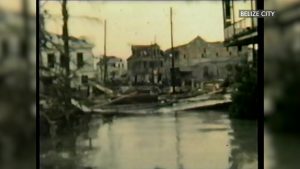
Hurricane Hattie
Paul Lopez, Reporting
It all started back in 1975, just over a decade after Hurricane Hattie devastated the Old Capital. In the spirit of revival and patriotism, forty Belizeans came together with a spark of inspiration, to bring life back to the Tenth of September celebrations through a vibrant road march. Among them was Solie Arguelles, now seventy-nine years old. Back then, she was in her late twenties and full of energy, helping to shape what would become one of Belize’s most beloved traditions, the Carnival Road March.
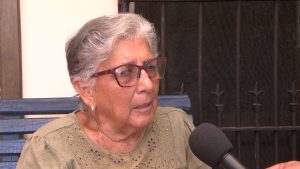
Solie Arguelles
Solie Arguelles, Former Member, Committee of Forty
“It was like after the hurricane, the spirit of performing and street dancing had gone to nothing. We were not parading anymore as we used to in bunches, the people’s parade. Mr. Henry and I in that committee of forty decided we needed something to boost up the morale and bring back the colorful tenth of September that we knew.”
So, what was the answer to reviving the spirit of the Tenth? Simple, they took it to the streets with music, movement, and pure energy. Organized street dancing became the heartbeat of a new tradition, and Belize’s Carnival was born.
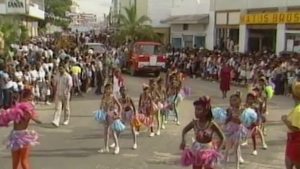 Solie Arguelles
Solie Arguelles
“And that is how we started, with the street dancing and pretty music. That was the beginning of the generators with music on a truck. We had it in little, small pickups at the time. We did not have those big monstrous trucks today.”
At the time, the sole focus of the event was on children’s participation. So, when Marina Welcome joined the road march eight years later with Jump Street Posse, her junior band was able to fit right in.
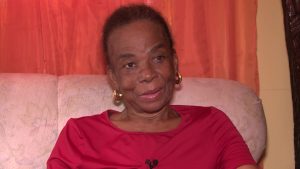
Marina Welcome
Marina Welcome, Band Leader, Jump Street Posse
“In those days carnival was fun. It was not about the money. It was about the love for the children, keep the children off the streets and have a lot of fun. That is what carnival was all about. In those days, you did not have to spend a lot of money. I remember you make out of garbage bag, coconut leaf, crocus bag, but the design was so creative out of it, that the people look forward to see and then you start to improve, and it get bigger and better.”
According to Arguelles, in those early years costume designers used vibrant colors to represent the celebratory mood while exuding national pride. She was a strong advocate for conservative costume designs and dance moves during the parade.
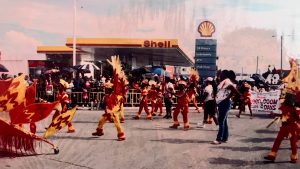 Solie Arguelles
Solie Arguelles
“My thing was that we have too many eyes looking at these children and the thing with that is we don’t know who will become a predator. And, we had too many predators drinking beer, watching these kids.”
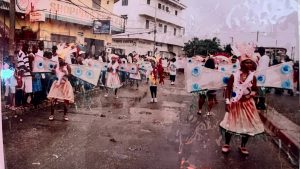 Marina Welcome
Marina Welcome
“They did not have any rules on how to dress the kids, because in those days people were not focusing on abusing the kids, until the violence started stepping in, the committee got stricter with the dressing and the dancing.”
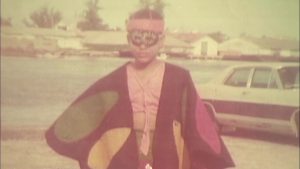 Karen Vernon didn’t just watch history unfold, she was part of it. Back in 1975, when Belize’s very first carnival road march hit the streets, Karen was front and center. Her mother had decided to enter a group in the parade, and Karen, just a young girl at the time, was right there in the spotlight.
Karen Vernon didn’t just watch history unfold, she was part of it. Back in 1975, when Belize’s very first carnival road march hit the streets, Karen was front and center. Her mother had decided to enter a group in the parade, and Karen, just a young girl at the time, was right there in the spotlight.
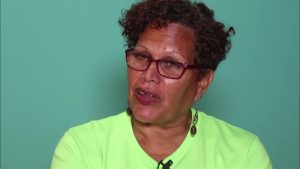
Karen Vernon
Karen Vernon, Original Carnival Participant (File: Sept 2020)
“I was thirteen at the time and this was exciting, this is a parade you actually put on costumes and dance through the streets. We were butterflies and we were very modestly dressed and we had black wings, so we portrayed butterflies. I remember before we moved off from Court House Warf our costumes were starting to rip apart, they were sewing and gluing and putting stuff back together. But we didn’t care, we were ready to dance through the streets and have fun.”
When Belize’s carnival road march first hit the streets, it wasn’t about trophies or cash prizes. The real driving force? Pure love for celebration and national pride. It was built by people who simply wanted to bring joy, unity, and vibrant energy to the community and they did it with heart, not for headlines.
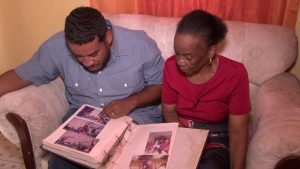 Marina Welcome
Marina Welcome
“I think it was passion, because in those days the prize was only three hundred dollars and nobody complained. We were good.”
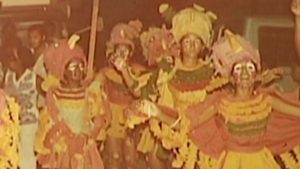 Solie Arguelles
Solie Arguelles
“We did it for the fun, for the celebration of the tenth. I personally wanted a nationalistic spirit, I just have always been that I want to appreciate my flag.”
As Marina Welcome peruses through an old photo album filled with memories of those early days, she reflects on the role she played in shaping what has evolved into today’s carnival. Her contributions, like those of Arguelles, and the Committee of Forty, are invaluable. Their legacy will live on through the decades to come. Reporting for News Five, I am Paul Lopez.






Facebook Comments